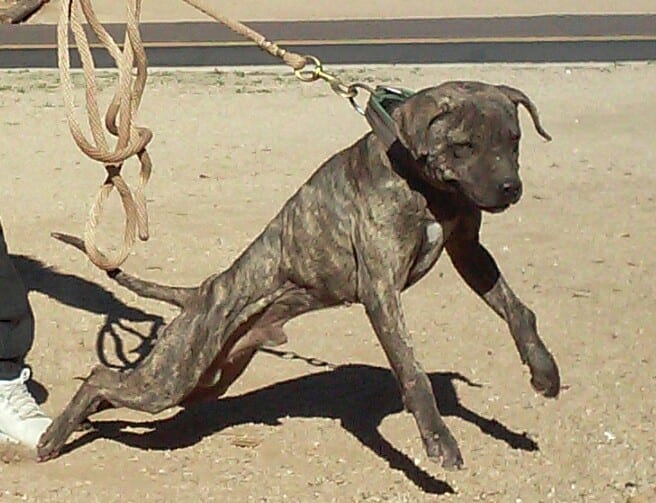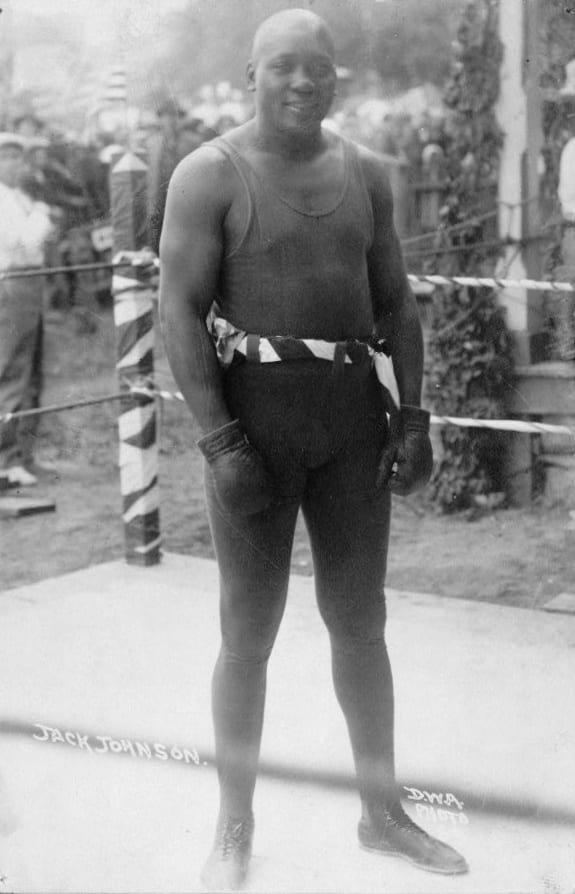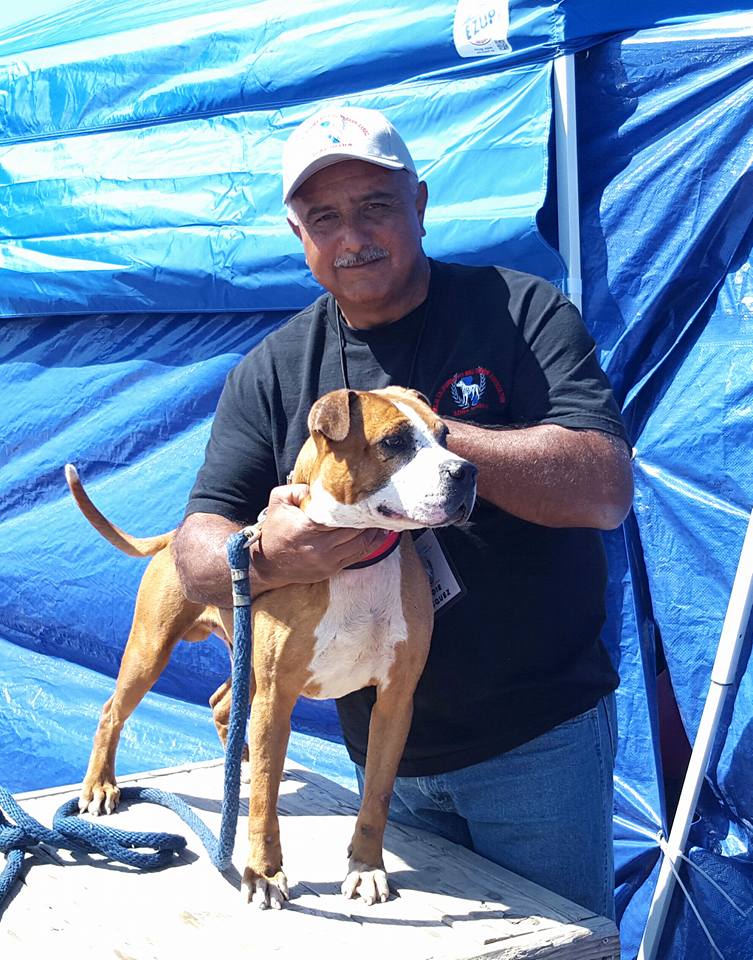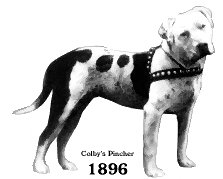Search Posts
Recent Posts
- The Long Goodbye January 18, 2024
- Once More Around the Mulberry Bush January 9, 2024
- The Wash December 28, 2023
- The Truth About Carver Dogs December 1, 2021
- The Question of Pain November 9, 2021
Categories
Subscribe!
Thanks for subscribing! Please check your email for further instructions.
Early Influences
Early Influences
by
Richard F. Stratton
When I wrote my first book on the American Pit Bull Terrier breed some forty years ago, the breed was but little known—and yet, it still had a somewhat notorious reputation among those few who did know about it. For that reason, I tried to make my book as classy as possible, and I included quotes at the heading of each chapter. The fact was that I liked quotes anyway, but it seemed like a touch of class. It still does, and it warmed my heart some time back when a dog writer critic anointed my Pit Bull books as “the best breed books around.†What made me happy was that the comment was made about books about our breed. That’s how hung up about the breed I was—and still am, of course!
One of my favorite sources of quotations was Francois, Duc De La Rochefoucauld.

He was a Frenchman born to nobility in 1613, but he was enough of a rebel that he got himself thrown into the Bastille at least once. One of the quotes I used was “Old people like to give good advice as solace for no longer being able to provide bad examples.†Another favorite of mine is “We can forgive our friends for being boring, but we can never forgive them for finding us boring.†In my last book, there was a connection between all the people quoted, but most readers would be unable to discern it—and I’m not telling. At least, not here.
I deliberately withheld some names in my books, as I was not sure that some of the families of the people involved might prefer that the names of long dead loved ones not be connected with the infamous Pit Bull. That was a private thought, but I would be indignant to hear anyone else voice such a concern. The good old APBT remains in my mind a noble breed—and it can’t be helped that many people are ignorant about it and have only the media to form their opinions for them.
In any case, the man who introduced me to the breed was Carson Marrow, at the time the chief of the Border Patrol, and my father worked for him. We lived in Arizona then, and he had heard from my father about how some neighborhood kids liked to sic their large German Shepherd on my Collie. The chief had gamecocks and pit dogs, and he lent me a small brindle Bulldog, named “Nails,†and taught me how to use a breaking stick. I recall his saying, “Those boys and their dog will learn a lesson when they sic their bully on this little gentleman.†I couldn’t believe that I would have to pry that little brindle dog off of that big bully of a German Shepherd—but that is just what happened! It was at that time that the breed attained heroic status for me, and that perception has never quite left me.

Later, living in Colorado, I met Howard Baker, who owned a restaurant. I could talk with him in the late afternoon, when he was cutting steaks for the dinner hour. I had met him when he sponsored a boxing club for young boys. Howard seemed something of an icon to me. He had done all the exciting things. He had been a successful prize fighter, only losing two matches in his life, and both of them were by decision and while going for a championship title. After he retired from boxing, he became a race car driver, so he led an interesting life. Of course, one of the most interesting things to me was that he was a devotee of pit dogs. A lot of the stories that I published in my books, about Jocko, Lion, and the rest, I got from him and one other fellow. That was James Wood, owner of the Imperial Tea and Coffee House. I loved to hear him and Howard talk about the antics of the old pit dogs that they had loved so much in their younger days. Both of these men were held in high esteem by the people of Boulder, Colorado, back in the 1940s.
Even to this day, I recall things that Howard told me about, as he was a learned man in his own way—and he was interested in intellectual subjects, even though he barely finished high school himself. Of course, even though he influenced me then toward an academic career, I most wanted to hear him talk about his beloved pit dogs and the boxers that he had known. That included Jack Dempsey, and he had told me that Jack Dempsey was a devotee of Bulldogs. Later, I saw pictures of Dempsey with the dogs. In that day, Dempsey was regarded, generally, as the greatest heavyweight of all time. Howard was not of that mind. In his opinion, Jack Johnson was the best. Howard himself was an exponent of defensive boxing, and he told me Jack Johnson was a master at defense, catching an opponent’s punches like an outfielder catching baseballs.

It wasn’t until last year that I got a DVD of a PBS documentary on Jack Johnson. I was amazed to discover that many of his fights were filmed in their entirety. They were in black and white, of course, but I was nothing short of astounded to learn that these films had been taken and still survived. So I could see for myself that Howard was right. Johnson did catch an opponent’s punches, much like a baseball, and he reminded me of defensive pit dogs that countered the moves of an opponent. Those kinds of dogs were always hard to beat, and so was Jack Johnson, as Howard had told me.

Before I met Howard, I had written to Louis B. Colby, as he had written an article in a popular dog magazine at the time and advertised his dogs as “American Bull Terriers†and had “Staffordshires†in parentheses. Up to this time, I had never actually owned a Bulldog, just taken loan of them, so I bought a pup from Lou, and his letters were like gold to me. It was a special treat to visit him some years ago and see the very original picture of Colby’s Pincher, the one that had been copied in so many books. He showed my wife and me around the haunts of where his father, the famous John P. Colby, had kept dogs, and that was one of my all-time favorite trips.

I have seen historical sites around the world and visited the graves of such luminaries as Shakespeare and Isaac Newton, but it was a special treat to view the gravesite of John P. Colby. Amazingly, it was not a tourist site yet. Somehow the public has misplaced priorities!
Howard told me about William J. Lightner, one of the great breeders of all time, living down in Colorado Springs, so it was not long before I made the trip down there. Although Bill Lightner was a giant of a man, in his 70s or 80s when I made his acquaintance, he liked his Bulldogs small. He also was one of the few dog men that I knew who consistently trimmed the ears of his dogs.
Lightner had been a bare knuckle boxer in his early days, and that is one reason that Howard may have known about him, but there was the connection with the dogs, too. Surprisingly, Lightner had also been a professional singer, although most of his career was as an engineer on the railroad, piloting the old steam engines that were still prevalent when I first met him.
Lightner’s predilection for small dogs was mirrored among many of The Fancy, as articles touting small dogs peppered whatever periodicals there were that dealt with the breed in that day. (There were not many.) Finally, some fellow named “R. F. Wallace†wrote an excellent article that agreed that small dogs were the best, but pointed out that it was because their breeding was generally better. The neophytes were the ones who liked the big dogs, and they weren’t so choosy about picking bloodlines, or even the parents of the dogs. Wallace insisted that there were good big dogs, though, even though he generally preferred the smaller dogs.
Later, of course, I was to get to know Bob Wallace quite well and learned that one of the dogs he most admired, the immortal Centipede, was a pretty big pit dog, weighing in at 54 pounds (pit weight, so he was actually a much larger dog). The fact was that Bob had dogs of all sizes, but he had a special spot in his heart for the small ones, just like Lightner.

I remember the days when Bulldogs were but little known. It was especially true that if your little dog was jumped by some large dog, as so many dogs ran loose in those days, any crowd that gathered was always with the little dog. And they never failed to be amazed with the fighting capabilities of the small dog. It was kind of fun to have strangers gush over your dog because he was such a great little fighter. I dare say it would not be the case today—even if your Bulldog was the size of a Chihuahua!
The fact was that even in those days, a stray dog was unlikely to approach a leashed Bulldog, not with a silent dog staring holes through him, begging him to get close. But I did have one or two incidents in which a bully dog actually jumped my Bulldog. However, I had learned one or two tricks to get a dog to close in on my dog. One was to pull my dog away so that it looked as though he were retreating. That kind of move always encouraged a bully. Howard chided me for letting my Bulldog get hold of any cur dogs, and I am not so proud now of my actions, but I soon outgrew such inclinations. My only defense was that it was something akin to having a Secretariat and never seeing him race. Also, I was still young, so perhaps I can be excused for such actions. In retrospect, I only allowed such encounters with bigger dogs that tended to be bullies.
Howard was about fifty when I first made his acquaintance, but I saw pictures of him from his boxing days, when he was called the “Colorado Kid.†Although he was nearly six feet tall, he had fought at middleweight and welterweight when he went for the championships.
When Lightner showed me a dog named Colorado Dan, I immediately thought of the Colorado Kid (even though it was difficult for me to think of him with such a youthful designation). Colorado Dan became quite a famous pit dog. Although Howard is not a household word today, I think that he should be remembered. When I listened to all the stories about the dogs, I never dreamed that I would give them an element of immortality by writing some of them up in my books. I wish that he could have lived long enough to see them. He loved talking about those old dogs so much that I think that he would have enjoyed seeing the stories in print. I would have thought of them as tall tales if it hadn’t been for Woods collaborating them.
From the Border Patrol chief to Howard to Lightner, these people were not only quality folks, but larger than life characters. The chief was someone about whom many stories were told, like the time he brought in several wanted men all by himself. I never got to know him really well, but he started me in the direction of Bulldogs—so he had to be a good guy! In truth, getting started with such good people inoculated me against any bad associations to come.
Even if there were no good Bulldog citizens—and there most certainly are plenty of good people!—I would not get rid of my Bulldogs in favor of Poodles or Labradors just to enhance my social status. The best dogs deserve the best people, even if it doesn’t always turn out that way.
What fantastic stories… I will have to buy your books. A big hug from Madeira Island, Portugal.
it was about 30 years ago when i read your books ( in Singapore) and became a proud minority who understood gameness and the cruelty of allowing another breed to engage.
Your unbridled education paved cherished memories of their company and experiences.
Although, its unlikely these days for me , i am genuinely glad that you r still around and kicking! not least of all still true to your beliefs that few can say in half a century.
Salute for your gameness sir may you enjoy your golden era.
Thanks. I’m doing well so far, and I appreciate your good wishes.
I appreciate your comments.
Mr Stratton is the best thing that ever happened for the breed. He is an educated class act and the most staunch supporter of the greatest breed of dog to ever grace the earth. Yours in sport, S.B.
Thanks, Steve.
Thanks.
You were the reason I learned so much about this incredible breed. A friend got a game bred carver dog in 1982 in Virginia and I’d never heard of them. Needless to say I was hooked. Discovered your books and moved to Texas where they were common. Met some good people and got involved with the breed in the box. Lucked into an incredible free Boudreaux dog that really cemented how important blood and breeding was. Totally different animal than I’d seen before. Met an ex neighbor of Floyd Boudreaux’s and bred to him but by that time he was out of the game and the Boudreaux dogs I’d made a breeding to for a friend had died. Went with a heavy carver dog and it’s line was identical to the female I bred to on top and bottom had Indian bolio, the only famous dog not already on my paper. Had dibo,bullyson, snooty,ironhead,and all the biggest names in my six gen ped. Soldier was my pick and the best dog that ever lived. (To me of coarse ) total monster in the box but at 62 pound pit weight it was really hard to find matches. Especially after a few guys showed up at his second roll and he destroyed a two x winner in less than ten minutes at 14 months old. He stopped a heavy snooty two time winner in a roll after the owner pulled his litter mate when a guy showed him soldier fucking in a people biter for 42 minutes on tape. He rolled his 78 pound pit weight giant of a littermaye with soldier and giving up 16 pounds after getting held for ten min he broke loose and stopped Chas in another ten. Blood is all.
I always apologize when people say I got them into the dogs. They are a lot of work, and the laws are crazy now, but they are worth it to diehards like me.
Yeah, good story, and I agree about the importance of breeding.
By the way, rocky , the people biter was dead game. Scratched although he couldn’t stand or walk. Touch and go for a week but he made it. Soldier was a head dog and he was on rockys ears the entire time.
Yeah, there are game dogs like that, but I’m generally in favor of putting them down. I have my blind spots, too, where I like a dog with questionable temperament enough that I want to look the other way.